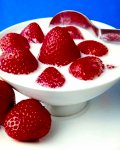 The British media had a feeding frenzy over artificial food colourings again last week, following pronouncements from the UK’s Food Standards Agency (FSA) urging manufacturers to voluntarily remove six additives from their products. The additives in question were linked in a Southampton University study funded by the FSA and published in The Lancet that linked them to hyperactivity in children.
The British media had a feeding frenzy over artificial food colourings again last week, following pronouncements from the UK’s Food Standards Agency (FSA) urging manufacturers to voluntarily remove six additives from their products. The additives in question were linked in a Southampton University study funded by the FSA and published in The Lancet that linked them to hyperactivity in children.
Ingredients with bright names, such as Sunset yellow (E110), Quinoline yellow (E104), Carmoisine (E122), Allura red (E129), Tartrazine (E102), and Ponceau 4R (E124), are compounds that contain a doubly bonded N=N group sandwiched between two aromatic rings. The shuffling of electrons across the group allows them to absorb specific wavelengths of light and reflect others (depending on the chemistry of those rings) and so they have strong colouration. The FSA points out that these products do not exist in nature and give colour only artificially to a range of foods including tinned mushy peas, tinned strawberries, and fruit juice cordials (orange squash, for instance). Not being natural is not, of course, reason to ban an additive. The bright colouring, cochineal, for example, is entirely natural, but is also an apparent carcinogen.
It is true that the original tests that allowed these compounds to have their “E” safety rating were carried out two decades ago, but the European Food Safety Authority (EFSA) announced that the conclusions of The Lancet study were not strong enough nor adequately definitive to warrant a change to the safety labelling.
No parent wants to feed their child, non-nutritious products that could harm their health. But, if that’s the case why are the burger bars and other fast-food joints stuffed full every weekend and why are ready-meals and TV dinners still so enormously popular? More to the point, if parents are really so concerned about the food their children eat, why do we still see supermarket shelves stacked with tins and packets full to the brim with brightly coloured food? It is not as if this latest scare is anything new. Growing up in the 1970s and 1980s, I remember food colourings being talked about repeatedly, tantrums and tartrazine were linked way back when, not just in this one recent paper. We could so easily live without a blush of tinned strawberries and mushy peas that are a whiter shade of pale, surely?
Regardless, of whether these compounds really do cause behavioural problems in children, or whether such problems are due more to social deprivation, hard-pushed single parent families, and poverty is another matter. If as many column inches were set aside for promoting fresh air, exercise, and campaigning for more affordable seasonal fruit and vegetables as there are for every food scare that comes along, we’d all be a lot healthier and the market for artificial foods would simply dry up. Now, where’s whipped cream for my tinned strawberries?